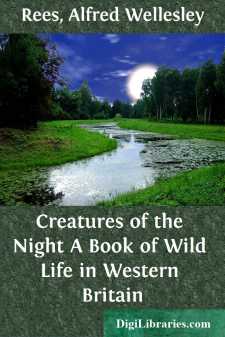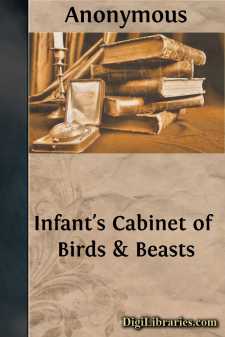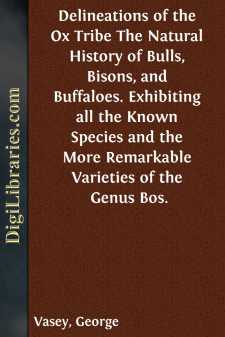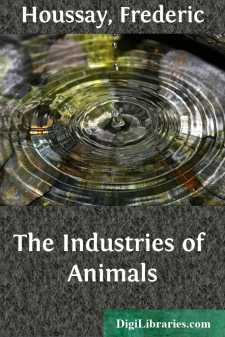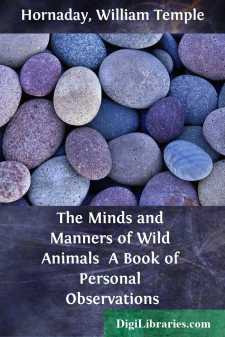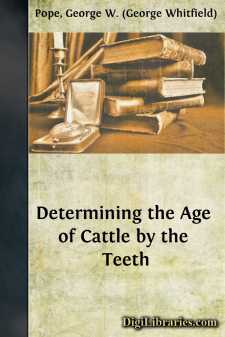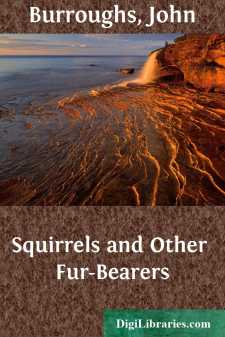Nature
- Animals
- Birds & Birdwatching 41
- Dinosaurs & Prehistoric Creatures 1
- Flowers 5
- General 32
- Horses 6
- Insects & Spiders 19
- Mammals 7
- Mushrooms 2
- Natural Disasters 6
- Natural Resources 3
- Reptiles & Amphibians 2
- Trees & Forests 10
Animals Books
Sort by:
THE HOLT AMONG THE ALDERS. I first saw Lutra, the otter-cub, while I was fishing late one summer night. Slow-moving clouds, breaking into fantastic shapes and spreading out great, threatening arms into the dark, ascended from the horizon and sailed northward under the moon and stars. Ever and anon, low down in the sky, Venus, like a clear-cut diamond suspended from one of its many twinkling points,...
more...
by:
George Vasey
PREFACE. The primary object of the present work, is to give as correct and comprehensive a view of the animals composing the Ox Tribe, as the present state of our knowledge will admit, accompanied by authentic figures of all the known species and the more remarkable varieties. Although this genus (comprising all those Ruminants called Buffaloes, Bisons, and Oxen generally,) is as distinct and well...
more...
by:
R. Lee
THE QUADRUMANA, OR MONKEY TRIBE. Formed like man, and practicing similar gestures, but with thumbs instead of great toes upon their feet, and with so narrow a heel-bone, that even those who constantly walk upright have not the firm and dignified step of human beings; the Quadrumana yet approximate so closely to us, that they demand the first place in a book devoted principally to the intellectual...
more...
by:
Frederic Houssay
The naturalists of yesterday and the naturalists of to-day. — The study of animals, plants, rocks, and of natural objects generally, was formerly called “natural history”; but this term is tending to disappear from our vocabulary and to give place to the term “natural sciences.” What is the reason of this change, and to what does it correspond? for it is rare for a word to be modified in...
more...
PREFACE During these days of ceaseless conflict, anxiety and unrest among men, when at times it begins to look as if "the Caucasian" really is "played out," perhaps the English-reading world will turn with a sigh of relief to the contemplation of wild animals. At all events, the author has found this diversion in his favorite field mentally agreeable and refreshing. In comparison with...
more...
DETERMINING THE AGE OF CATTLE BY THE TEETH. The age of cattle can be approximated closely by the appearance, development, and subsequent wear of their second incisor teeth. Cattle have eight incisor teeth, all in the lower jaw. In the calf at birth two or more of the temporary or first incisor teeth are present. With the first month the entire eight incisors have appeared.Fig.1.—Internal face of...
more...
by:
Charles Copeland
I. FOX-WAYS. Did you ever meet a fox face to face, surprising him quite as much as yourself? If so, you were deeply impressed, no doubt, by his perfect dignity and self-possession. Here is how the meeting generally comes about. It is a late winter afternoon. You are swinging rapidly over the upland pastures, or loitering along the winding old road through the woods. The color deepens in the west; the...
more...
by:
Anonymous
OUR PETS. This is Pol-ly's own cat, Top-sy. She looks ve-ry prim and quiet; but if you play with her, you will find she is a ve-ry mer-ry lit-tle cat. She will jump up-on the ta-ble at break-fast, and run off with Pol-ly's toast; and if mam-ma be wri-ting a let-ter, Top-sy will steal soft-ly a-long the arm of the so-fa, and rub her paw o-ver the last word mam-ma has writ-ten, and make a great...
more...
by:
John Burroughs
SQUIRRELS Walking through the early October woods one day, I came upon a place where the ground was thickly strewn with very large unopened chestnut burrs. On examination I found that every burr had been cut square off with about an inch of the stem adhering, and not one had been left on the tree. It was not accident, then, but design. Whose design? A squirrel’s. The fruit was the finest I had ever...
more...


